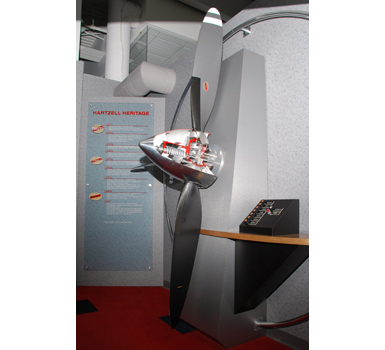That’s the word from JobsOhio, a private nonprofit focused on job creation in Ohio. The momentum has continued this year, with the organization’s efforts resulting in more than 44,000 jobs created or retained in the first half of 2014 — many of those jobs in manufacturing, but many that are not.
A Diversified Economy
It’s a happy story that’s being told across the state. “In general, the economy continues to improve coming out of the recession,” says Jacob Duritsky, managing director of research for Team Northeast Ohio in Cleveland. Justin Sommer, assistant city manager and economic development director for the city of Piqua, points to the hundreds of jobs in his part of the state that are linked to an expansion at Whirlpool’s KitchenAid plant, a Procter & Gamble distribution center, and a $200 million Fuyao Glass Industry Group facility that is the state’s largest Chinese investment ever.
And Johnna Reeder, president and CEO of REDI Cincinnati, is thrilled by GE’s choice of Cincinnati for a U.S. service center that’ll create 1,800 new jobs. “That’s the largest single new jobs announcement in Ohio in a decade. It’s projected to produce a $1 billion per year economic boost for the region.”
Duritsky says manufacturing continues to make up a significant part of the economy in his part of Ohio, in the neighborhood of 20 percent, but “we’ve seen a lot of diversification in employment,” he adds. For example, healthcare employment has grown by 20 percent since 2014.
That’s not just caregivers, either — an expanding Northeast Ohio healthcare research sector has seen expenditures nearly double since 2000, and has generated some 700 patents in that timeframe. The opportunities inherent in that R&D work hold promise for generating growth in other sectors, Duritsky says. “Our strengths in healthcare and our strengths in manufacturing are coming together.”
Diversity is on display in Cincinnati, too, according to Reeder. Advanced manufacturing is a prime sector, but “we have seen continued growth in advanced energy; biohealth; consumer products and brand development; food processing and agriculture; and finance, insurance, and IT,” she says. There are nine Fortune 500 headquarters in the metro area, she points out, one of the most prominent being Procter & Gamble. Hosting such a giant in consumer products has brought the region an expertise in marketing and branding — “There are 60,000 marketing and branding professionals in our region,” Reeder notes.

JobsOhio views the state in six distinct regions and partners with economic development organizations in each of them. All have their successes to report.
The Appalachian Partnership for Economic Growth last year had its hand in the creation of more than a thousand new jobs and the retention of more than 2,100. There were commitments for more than 2,000 new jobs and nearly $400 million in investment due to the work of the Dayton Development Coalition. In Northwest Ohio, the Regional Growth Partnership reported 1,300 new jobs and $408 million in investment last year. Team NEO and Columbus 2020 each tallied about five thousand new jobs, and Cincinnati USA Partnership for Economic Development’s work helped create more than 3,500 jobs in 2013.
The statewide organization gives particular attention to a series of industry sectors it believes reflect the state’s competitive advantage, core sector strength, and capital-intensive productivity. They’re industries that have been growing more quickly than the private sector as a whole, and they tend to have jobs with above-average salaries. Targeted industries, in order of jobs created last year, include advanced manufacturing; information technology and services; financial services; food processing and agribusiness; automotive; energy; biohealth; aerospace and aviation; and polymers and chemicals.
The reasons for Ohio’s economic success are many, according to local economic development officials. Location is a major factor, according to Sommer. “West-central Ohio is all about access — access to markets, access to workforce, access to suppliers, access to customers. The state of Ohio is a day’s drive from 50 percent of the American population and 65 percent of manufacturing.”
Low costs are a big draw, too, according to Reeder. “In fact, KPMG this year not only ranked us second in the country on a list of the least costly locations to do business but also seventh in the world for our extremely favorable tax structure.”
Developing the Workforce
Like economic development officials across much of the country, those in Ohio say workforce development is an ongoing challenge. “As the economy grows and the baby-boom generation starts to retire, we need to have enough workers with enough of the right skills,” observes Jay Foran, senior vice president of business attraction for Team Northeast Ohio.
Sommer agrees that impending retirement of a significant portion of the workforce means there’s work to do. “We’re very engaged in developing the emerging workforce into the industry sectors that are strong regionally, including STEM-related fields, engineering, mathematics.”
JobsOhio is engaged in similar work, striving to identify the state’s most in-demand jobs needs with regard to workforce readiness. The organization keeps its eye on state labor-market stats and projections, current job posting trends, and data from the state’s online job forecasting tool. This info is critical to the talent pipeline work of businesses, workforce partners in local areas, as well as the education community.
Workforce issues are both a challenge and an asset, says Steve Schoeny, development director for the city of Columbus. His is an education-driven region, he says — home of Ohio State University and some five dozen other postsecondary institutions that together host more than 140,000 students. “For a lot of companies that’s a real attraction,” he notes, particularly for companies with a lot of baby-boom employees approaching retirement. “They know they have a constant pool of workers coming in.”
Reeder explains the challenge of getting the word out about the area’s advantages; reputation is an issue, she says. “It’s not that we have a bad reputation, instead it’s that we have no reputation,” she observes. “Midwesterners by nature are humble, but we are learning to better shout out our successes from the rooftops, and lately we’ve had a lot of successes to share.”




